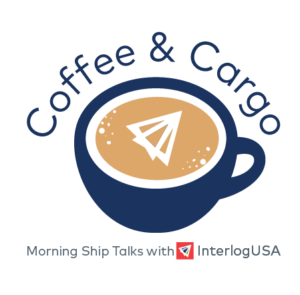Competitive Edge
November 3rd, 2021
Stay Current with Interlog’s Weekly Newsletter:
Sign up for our next Coffee & Cargo webinar –> CLICK HERE
Ocean Freight Market Update
IMPORT: Europe –> North America:
Port congestion is increasing once again at Long Beach with over 80 vessels waiting to dock. Savannah ports are still very congested and alternate routes are recommended.
Rates: Expecting rates to stay consistent the rest of Q4.
Space: Very tight/critical
Capacity: Tight – inland ports are a bit better, however main ports still are having equipment shortages.
TIPS: With capacity tight, it is recommended to book on premium services. Recommend to book 5 weeks in advance with premium service. Rerouting options away from Savannah are highly recommended.
EXPORT: North America –> Asia:
Rates: November GRI expected, focused on reefers and some carriers are also implementing GRIs on dry containers.
Capacity: Steady for Standard Containers, space becoming more available.
TIPS: Looking into re-routing options may be helpful to avoid port congestion at LGB and OAK. Booking 4-6 weeks in advance is recommended to secure equipment and space.
IMPORT: Asia -> North America
Rates: Premium rates are steady, no GRI predicted as rates remain trending downwards. No clear path for how low rates may go or if this is a new ‘constant’. Demand is lower than previous weeks which aids in rates decreasing.
Space: Very tight with long docking wait time at LGB. While rates are decreasing, demand is staying at high consistent levels.
Equipment Availability: near-normal conditions, except limited 45HC availability.
TIPS: Savannah Port is critical for port congestion, avoid Savannah and LGB whenever possible until further notice. Work on booking 5 weeks in advance.
Did You Know?
1.5 million people work in the supply chain and shipping industry!
Freight News
Duluth Seaway Port Authority Now Able to Handle Steamship-owned International Shipping Containers
Duluth Seaway Port, located in Minnesota, has announced that the Clure Public Marine Terminal is now able to handle steamship-owned international shipping containers transported by vessel. Deb DeLuca, an executive director at the port told American Shipper that, “we are ready as an uncongested choice for shippers looking to move containerized cargo to and from the heartland.” Amidst the congestion and delays that occur at some of the ports on the coast, Clure Terminal provides the option for containers to move inland and bypass those issues on the coast.
Clure Terminal is a full-service multimodal logistics hub for the Upper Midwest, so it makes sense that they offer the advantages of maritime container handling to complement their land-based network. According to American Shipper, Duluth Seaway Port Authority has invested about $36 million in terminal wide improvements since 2015 that helped pave the way for handling waterborne containers. Clure Terminal has five cargo berths, 430,000 square feet of warehouse capacity, more than 65 acres of outdoor ground storage, a roll-on/roll-off dock and twin rail-mounted gantry cranes according to Freightwaves. The maximum capacity at the Port of Duluth-Superior is a container ship carrying 400 to 500 forty-foot equivalent units.
California Port Fees: What does this mean and how much of an impact does this have?
Few are happy with last week’s jaw dropping news that the ports of Los Angeles and Long Beach are enacting an emergency fee for containers lingering too long at terminals. This is an attempt to clear congestion that has been preventing vessels from unloading cargo.
From what we have heard: Effective November 1st, ports will start counting storage time with assessments beginning November 15th. A Dwell Fee will be implemented against cargoes dwelling on port Terminals in excess of specified periods. The fee of $100 per container, increases in increments of $100 per container per day.
- For cargoes designated for movement by truck remaining on the Terminal more than eight days after discharge:
- On the ninth day, the daily charge/container will be $100 and the cumulative charge/container will be $100.
- On the tenth day, the daily charge/container will increase to $200 and the cumulative charge/container will be $300.
- Every additional day after, the daily charge and cumulative charge/container continues to increase
- For cargoes designated for movement by rail remaining on the Terminal more than five days after discharge:
- On the sixth day, the daily charge/container will be $100 and the cumulative charge/container will be $100.
- On the seventh day, the daily charge/container will be $200 and the cumulative charge/container will be $300.
- Every additional day after, the daily charge and cumulative charge/container continues to increase
Port of Los Angeles Executive Director Gene Seroka said they will be taking daily data snapshots of how long import containers sit on their container terminals. If the freight community makes sufficient progress unwinding the congestion, the port could hold off assessing the surcharge. According to Freightwaves, any fees collected from this will be reinvested for programs designed to enhance efficiency, accelerate cargo velocity, and address congestion impacts, according to the port authority.
Blog Of The Week

How the State of California is Getting involved in the Supply Chain Crisis
Sign up for our
industry answers
Our team works to provide valuable, unique, and relevant content to assist you in finding solutions. Sign up now.
